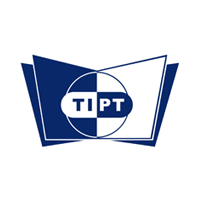
Yet while pharmaceutical innovation takes place all over the country, much of Canada’s pharmaceutical industry is clustered in Ontario. It is here where over half of all Canadians employed in the pharmaceutical sector work, and where leading companies such as Apotex, GlaxoSmithKline, Sanofi Pasteur, Johnson & Johnson, and more can be found. According to some estimates, as many as 3,200 clinical trials are under way in Ontario at any one time.
Of course, each new drug, medical device, and other product created—or imported—must be carefully reviewed for approval before it can be sold to Canadians. Here, many qualified graduates can find a world of opportunity. Read on to learn more about Canada’s drug regulatory system and why its smooth functioning necessitates the hard work of dedicated regulatory affairs professionals.
Health Canada and the Health Products and Food Branch
As a leader in pharmaceutical innovation, Canada takes safety seriously. To this end, Health Canada, the Federal department dedicated specifically to the health of Canadians, occupies an essential role within the pharmaceutical industry.
This department is comprised of many different branches and agencies, including the Health Products and Food Branch (HPFB). For graduates of regulatory affairs courses, it is this branch of Health Canada that they will most closely work with. That’s because for any drug to be legally sold in Canada (unless allowed in through the Special Access Program), it must submit an application to the HPFB. In fact, drugs are not the only products that must be approved by the HPFB, as it also reviews disinfectants, medical devices, and many other items.
How Professionals With a Regulatory Affairs Diploma Navigate the Application Process
When any potential new drug is developed, it must follow a set of clearly defined steps as it seeks to ultimately gain approval for sale in Canada. This process begins very early in the potential new product’s life.
Once a potential new drug is discovered, it must first be tested on small animals or tissue samples to determine what effects it has, as well as its toxicity. This initial testing phase is known as the preclinical testing phase. Once these early trials have demonstrated that the drug is safe and produces a beneficial effect, these early findings are compiled and submitted to the HPFB by pharmaceutical professionals. The HPFB will then review the data to determine if the potential new drug is approved for human trials.
Regulatory Affairs Professionals Play an Essential Role in Helping Drugs Reach Market

For each clinical trial, an application must be submitted to the HPFB. This helps to ensure that safety is always at the forefront, and that only the safest and most effective new products are allowed to progress. Once a potential new drug has been thoroughly tested and has successfully progressed through the different clinical trial phases, its developers can then file a New Drug Submission.
This submission is again made to the HPFB, and includes “the results of the preclinical and clinical studies, whether done in Canada or elsewhere, details regarding the production of the drug, packaging and labelling details, and information regarding therapeutic claims and side effects.” Only once the HPFB has carefully reviewed this submission can a new drug gain market authorization in Canada.
As a result, regulatory affairs diploma graduates play an essential role in helping new drugs reach market. Their hard work and commitment to the high standards set by Health Canada help ensure that drugs developed and imported to the country are both safe and effective.
Would you like to begin your career in Canada’s pharmaceutical industry?
Find out how our regulatory affairs program could help you secure your dream job in less than a year.
